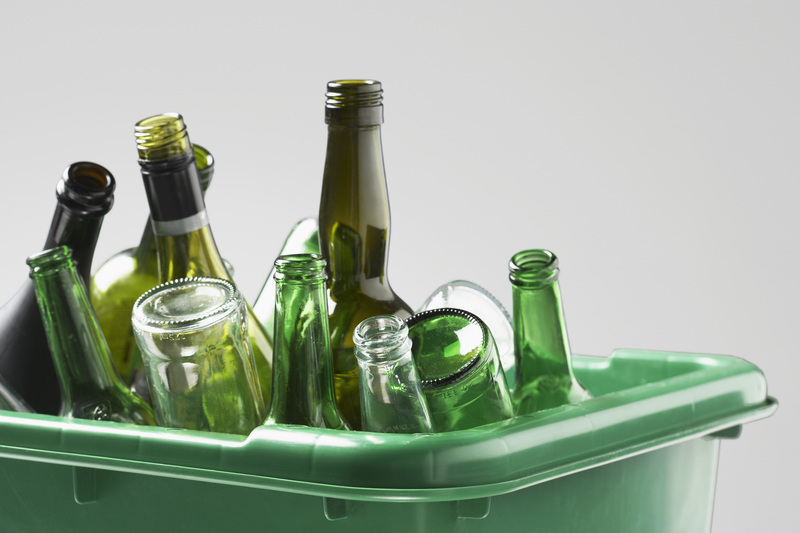Introduction: The Importance of Safe PPE Waste Management
In the aftermath of global health crises and growing awareness about infection control, the use of personal protective equipment (PPE) has skyrocketed in healthcare settings, industries, and even everyday life. From disposable masks and gloves to face shields and medical gowns, the surge of PPE waste presents a pressing challenge to both public health and the environment. Mishandling or improper disposal not only increases contamination risk but also intensifies pollution, impacting wildlife and our ecosystems. Therefore, adopting appropriate ways to handle and dispose of PPE waste with care is crucial for a sustainable and safe future.

What is PPE Waste? Types and Challenges
PPE waste encompasses any item designed to protect individuals from infection or hazardous substances, which has been used and is subsequently discarded. This includes:
- Disposable face masks (such as surgical or N95 masks)
- Gloves (latex, nitrile, vinyl)
- Face shields and safety goggles
- Protective gowns and coveralls
- Shoe covers and hairnets
- Respirators
PPE waste often contains contaminants, making it potentially hazardous. It poses unique handling and disposal challenges, as common recycling streams are unfit due to infectious risks and material composition. Additionally, a significant portion of PPE, especially single-use plastics, does not biodegrade, contributing to environmental burdens if mishandled.
Why Proper PPE Waste Disposal Matters
Handling and disposing of PPE waste responsibly protects human health, reduces environmental impact, and aligns with legal regulations. Key reasons include:
- Preventing cross-infection: Used PPE may carry pathogens. Improper management can transmit infections to sanitation workers, the public, and wildlife.
- Environmental protection: Single-use PPE can clog water systems, harm marine and terrestrial life, and contribute to microplastic pollution.
- Compliance with laws: Regulatory agencies require specific handling of biomedical and hazardous waste. Failing to comply can result in penalties.
- Building public trust: Businesses and healthcare institutions demonstrating responsible PPE waste practices foster trust among employees, customers, and communities.
Best Practices: Ways to Handle and Dispose of PPE Waste With Care
1. Segregation at the Source
Segregating PPE waste from general waste is the first and most vital step in safe disposal. This ensures potential contaminants are separated and managed correctly.
- Place clearly labeled PPE disposal bins in convenient locations at entry/exit points, healthcare facilities, and common areas.
- Use color-coded bags (often yellow or red) designated for medical or infectious waste.
- Train staff and the public on the importance of correct segregation.
2. Storage and Containment
Safe storage before disposal prevents contamination spread. Guidelines include:
- Store used PPE in leak-proof, puncture-resistant containers with tight-fitting lids.
- Avoid overfilling; containers should be under three-quarters full.
- Label containers clearly as "Used PPE - Contaminated Waste" or equivalent.
3. Minimizing Contact and Safe Handling
Minimize direct handling of PPE waste wherever possible. Support safety with these methods:
- Use gloves and, if necessary, masks and eye protection when handling waste containers.
- Wash hands thoroughly after any contact with used PPE, even if gloves were worn.
- Do not compact waste manually to avoid accidental exposure.
4. Disposal Methods: Incineration, Autoclaving, and Landfilling
There are several recognized methods for PPE waste disposal:
- Incineration: High-temperature incineration destroys pathogens and reduces waste volume significantly. However, incinerators should meet air quality standards to minimize harmful emissions.
- Autoclaving: Autoclaving uses pressurized steam to disinfect PPE before final disposal, making it an eco-friendlier choice where available.
- Sanitary Landfilling: For areas without incinerators or autoclaves, properly managed landfills with barriers and leachate controls are recommended for non-hazardous PPE waste.
Always follow local and national regulations when selecting disposal methods, as requirements can vary.
5. Recycling and Sustainable Alternatives
While most single-use PPE is non-recyclable due to contamination risk, innovations in material recovery and sustainable PPE waste solutions are emerging.
- Specialized companies can collect and process certain types of used PPE into new products like building materials or fuel.
- Consider sourcing compostable or biodegradable PPE wherever feasible and permitted.
- Rigorously clean uncontaminated, reusable PPE (like face shields) for extended life.
The Role of Employers and Institutions in PPE Waste Handling
Developing a PPE Waste Management Policy
Employers and facility managers must adopt a formal policy for managing PPE waste. Such policy should address:
- Procurement of suitable disposal supplies (bins, liners, labels, PPE for handlers)
- Location and maintenance of collection points
- Staff and public education on safe PPE waste handling
- Partnership with certified waste disposal companies
- Procedures for accidental spills or exposure
Training and Awareness Programs
Regular training for employees is crucial. Focus areas include:
- Correct donning and doffing of PPE to reduce contamination.
- Identifying different PPE waste streams and correct segregation practices.
- Emergency protocols in case of exposure.
Engaging in Continuous Improvement
PPE waste management trends and regulations evolve rapidly. Institutions should:
- Regularly review procedures for compliance and efficiency.
- Solicit feedback from waste handlers and users.
- Stay informed about new disposal technologies and local best practices.
Personal Responsibility: How Individuals Can Dispose of PPE Waste With Care
Everyone, not just institutions, has a part to play in proper PPE disposal. Here's how individuals can help:
- Carry a "PPE to-go" bag for used masks and gloves when on the move.
- Do not litter PPE in parks, streets, or waterways--always locate an appropriate waste bin.
- Avoid flushing PPE down toilets; this causes clogs and pollution.
- If feeling unwell, double-bag PPE and inform waste handlers when possible.
- Encourage family, friends, and colleagues to follow PPE waste disposal best practices.
Environmental Impact: What Happens If PPE Waste Is Disposed of Improperly?
If PPE waste is mishandled, the effects can be severe and long-lasting:
- Wildlife may ingest or become entangled in discarded face masks and gloves.
- Microplastics from PPE can infiltrate soil and waterways, entering the food chain.
- Blockages in sewage and drainage systems can lead to flooding and sanitation crises.
- Accidental contact puts sanitation workers and the public at risk of disease transmission.
Understanding these impacts highlights the urgency of careful PPE disposal at all levels.
Innovations Shaping the Future of PPE Waste Disposal
Researchers and companies are striving for greener, safer solutions such as:
- PPE recycling programs: Some firms collect and process masks and gloves to create new building materials or energy sources.
- Biodegradable PPE: Alternatives made from natural fibers that safely decompose.
- PPE take-back schemes: Healthcare and retail outlets establish collection hubs for used PPE from staff and customers.
- Guidelines and apps: User-friendly materials explain how to dispose of PPE waste with care.

Frequently Asked Questions About PPE Waste Disposal
- Can I recycle my used PPE?
Typically, used PPE cannot be recycled in standard collections due to the risk of contamination. However, check for dedicated PPE recycling schemes in your area. - How should I dispose of PPE at home?
Place used PPE in a sealed bag, then discard it in the general waste bin--never in recycling or compost. Double-bag if COVID-19 or another contagious disease is suspected. - What should businesses do with large volumes of PPE waste?
Contract a certified waste management provider skilled in hazardous and medical waste. Follow national regulations for documentation and transport. - Is compostable PPE available?
Some manufacturers now offer PPE made from biodegradable materials. Always verify that these meet safety standards and local composting guidelines. - What are signs of improper PPE disposal?
Finding masks or gloves on streets, in parks, or clogging drains indicates that public education and infrastructure need strengthening.
Conclusion: Adopting Responsible PPE Waste Practices
As the world continues to rely on personal protective equipment for safety, the pressing need for careful and environmentally sound handling and disposal of PPE waste cannot be overstated. From source segregation and secure containment to responsible disposal or recycling, every step matters. Institutions, businesses, and individuals must unite in adopting PPE waste management best practices to safeguard communities and our planet.
By following the comprehensive ways outlined for handling and disposing of PPE waste with care, we not only fight infection and protect workers but also pave the way for a cleaner, healthier future.